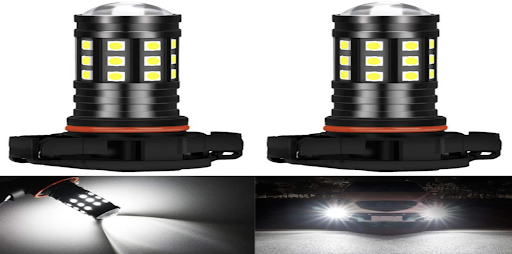Replacing traditional halogen bulbs with LED bulbs in your vehicles can significantly enhance visibility, safety, and energy efficiency. This comprehensive guide will walk you through the process of upgrading the lighting systems in trucks, cars, and bikes. By the end of this article, you’ll understand the types of vehicles and bulbs, the benefits of LED bulbs, how to choose the right ones, and the installation process.
Types of Vehicles and Bulbs
Trucks
Trucks are equipped with various types of bulbs, including headlights, taillights, brake lights, turn signals, and interior lights. Each of these bulbs plays a crucial role in ensuring visibility and safety on the road. Upgrading to LED bulbs in trucks can enhance brightness and longevity, making them a popular choice among truck owners.
Cars
Similar to trucks, cars use a variety of bulbs for different functions. Headlights, fog lights, brake lights, turn signals, and interior lights are essential for safe driving. LED bulbs offer a brighter and more energy-efficient alternative to traditional halogen bulbs, providing better illumination and reducing the need for frequent replacements.
Bikes
Motorcycles and bicycles also benefit from LED lighting upgrades. Headlights, taillights, turn signals, and auxiliary lights are crucial for rider safety. LED bulbs are more durable and provide better visibility, making them an excellent choice for bike owners.
Replacement Bulbs
When replacing normal bulbs with LED bulbs, it’s essential to choose the right type for your vehicle. LED replacement bulbs come in various sizes and configurations to fit different vehicles and lighting needs. Ensure that you select bulbs compatible with your vehicle’s make and model to achieve the best results.
Benefits of LED Bulbs
Upgrading to LED bulbs offers several advantages over traditional halogen bulbs:
- Energy Efficiency: LED bulbs consume less power, which can reduce the load on your vehicle’s electrical system and improve fuel efficiency.
- Brightness: LED bulbs provide brighter and more focused illumination, enhancing visibility and safety, especially during nighttime driving.
- Longevity: LED bulbs have a longer lifespan than halogen bulbs, reducing the frequency and cost of replacements.
- Durability: LED bulbs are more resistant to shock and vibration, making them ideal for vehicles that traverse rough terrain.
- Cooler Operation: LED bulbs generate less heat, which can protect your vehicle’s lighting components from damage.
Choosing the Right LED Bulbs
Selecting the right LED replacement bulbs is crucial for optimal performance. Consider the following factors when choosing LED bulbs for your vehicle:
Compatibility
Ensure the LED bulbs are compatible with your vehicle’s make, model, and year. Check the bulb size and type required for each lighting component.
Brightness
Choose LED bulbs with adequate brightness levels to enhance visibility without causing glare for other drivers. Look for bulbs with high lumens output.
Color Temperature
LED bulbs are available in various color temperatures, measured in Kelvin (K). A color temperature of 6000K to 6500K provides a bright white light that closely resembles daylight.
Quality and Brand
Opt for high-quality LED bulbs from reputable brands to ensure reliability and performance. Cheap, low-quality bulbs may fail prematurely and provide subpar illumination.
Features
Some LED bulbs come with additional features like built-in fans or heat sinks for better cooling, anti-flicker technology, and waterproofing. Consider these features based on your needs and preferences.
Installation Process
Installing LED bulbs in your vehicle is a straightforward process that you can do yourself with the right tools and instructions. Follow these steps to replace your normal bulbs with LED bulbs:
Step 1: Gather Tools and Materials
You’ll need the following tools and materials:
- LED replacement bulbs
- Screwdrivers (Phillips and flathead)
- Socket wrench set
- Gloves
- User manual or vehicle’s service manual
Step 2: Disconnect the Battery
For safety, disconnect the vehicle’s battery to prevent any electrical shocks or short circuits during the installation process.
Step 3: Access the Bulbs
Depending on your vehicle, you may need to remove parts like the headlight housing, taillight assembly, or interior panels to access the bulbs. Refer to your vehicle’s service manual for specific instructions.
Step 4: Remove the Old Bulbs
Carefully remove the old bulbs by turning them counterclockwise or releasing the retaining clips. Be gentle to avoid damaging the bulb socket or wiring.
Step 5: Install the LED Bulbs
Insert the new LED bulbs into the socket and turn them clockwise or secure them with retaining clips. Ensure a snug fit to prevent any movement or vibrations.
Step 6: Test the Bulbs
Reconnect the battery and test the new LED bulbs to ensure they are working correctly. Check for proper illumination, brightness, and alignment.
Step 7: Reassemble and Secure
Once the LED bulbs are functioning correctly, reassemble any parts you removed earlier and secure them properly. Double-check all connections and fittings.
Conclusion
Replacing normal bulbs with LED bulbs in trucks, cars, and bikes is a worthwhile upgrade that offers numerous benefits, including improved visibility, energy efficiency, and durability. By following the steps outlined in this guide, you can easily install LED replacement bulbs and enjoy a safer and more efficient driving experience.
Whether you’re looking to enhance your vehicle’s aesthetics or boost safety on the road, LED bulbs are a smart investment. Remember to choose high-quality bulbs that are compatible with your vehicle and follow the installation process carefully to achieve the best results.
FAQs
1. Are LED bulbs legal for use in vehicles?
Yes, LED bulbs are legal for use in vehicles, but they must meet certain standards and regulations. Ensure that the LED bulbs you choose are DOT (Department of Transportation) approved and comply with local laws.
2. Do LED bulbs fit all vehicles?
LED bulbs come in various sizes and types to fit different vehicles. It’s essential to check your vehicle’s manual or consult a professional to ensure compatibility before purchasing LED replacement bulbs.
3. How long do LED bulbs last compared to halogen bulbs?
LED bulbs typically last much longer than halogen bulbs. While halogen bulbs may last around 1,000 to 2,000 hours, LED bulbs can last up to 25,000 hours or more, depending on usage and quality.
4. Can I install LED bulbs myself?
Yes, installing LED bulbs is a relatively simple process that you can do yourself with basic tools and instructions. However, if you’re not comfortable with DIY installations, it’s best to seek professional assistance.
5. Do LED bulbs consume more power than halogen bulbs?
No, LED bulbs are more energy-efficient and consume less power than halogen bulbs. This can reduce the load on your vehicle’s electrical system and improve fuel efficiency.
6. Can I replace all my vehicle’s bulbs with LED bulbs?
Yes, you can replace most of your vehicle’s bulbs with LED bulbs, including headlights, taillights, brake lights, turn signals, and interior lights. Just ensure that the LED bulbs you choose are compatible with each specific application.


